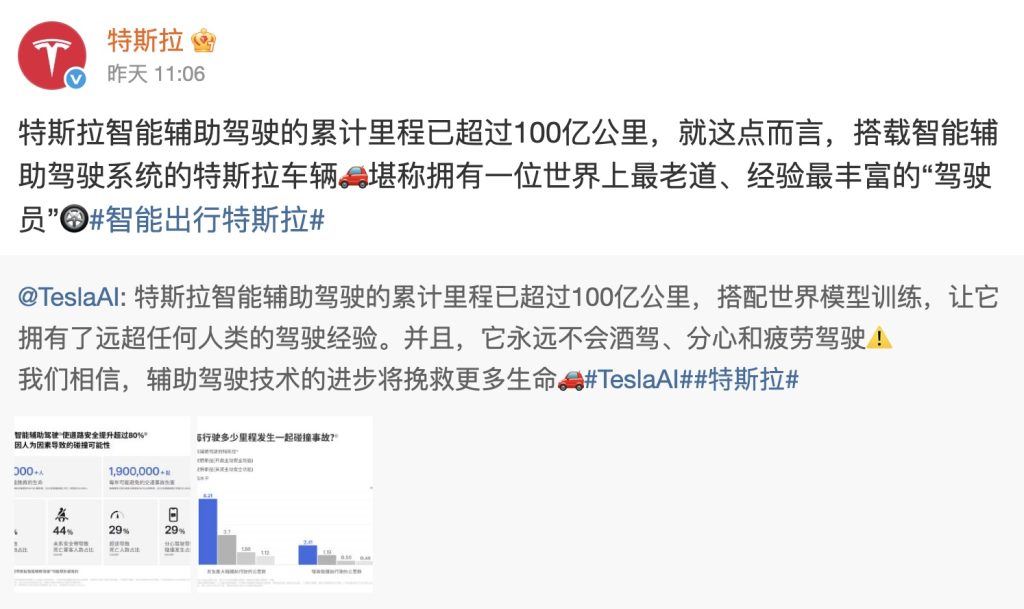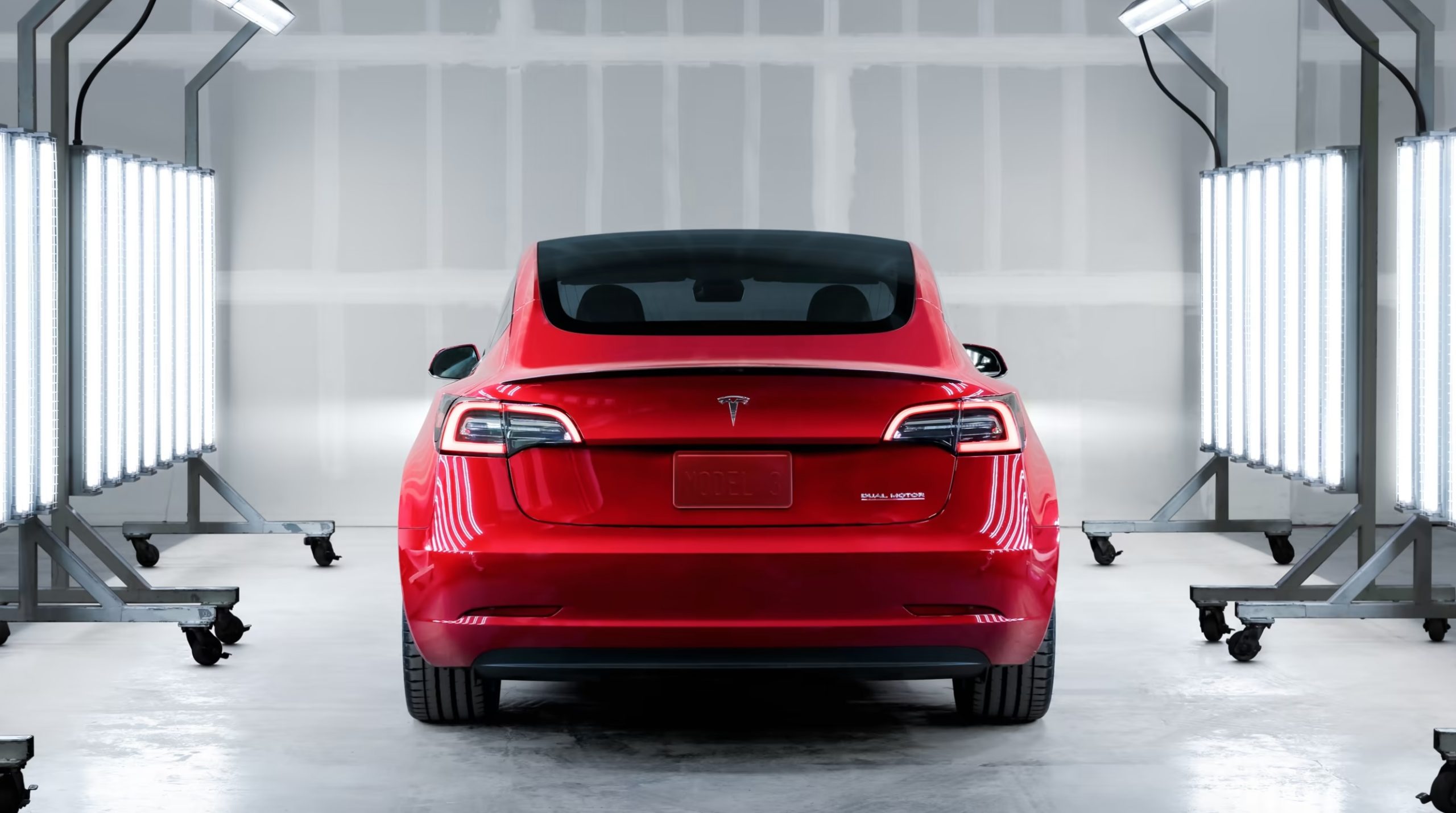Tesla has put its foot down on claims that its vehicles are prone to sudden “unintended acceleration,” which was alleged in a petition to the NHTSA submitted by a short-seller. In a recently-published blog post, the electric car maker explained that claims of SUA are false simply because its cars are designed to accelerate only when they are told to do so.
News recently broke that the National Highway Traffic Safety Administration is reviewing a petition claiming that all Tesla models are prone to SUA, and are therefore rife with a dangerous safety defect. The petition, which covers about 500,000 Teslas produced from 2013 to 2019, included 127 complaints that were submitted either by owners themselves, or others filing on their behalf.
The petition was submitted by Brian Sparks, who happens to be shorting Tesla stock. This means that he is financially incentivized to help push TSLA prices down. Unfortunately for the short-seller, claims of SUA on Teslas have never really borne fruit, as the vehicle’s logs have always proven that “unintended acceleration” happened because the driver pressed the accelerator by mistake.
And it’s not just Tesla that has defended its vehicles, either. Jason Hughes, a Tesla owner who has delved deep in the company’s software, and who has been critical of the company in the past, has gone on record offering a financial reward to anyone who can prove that a Tesla was involved in a sudden unintended acceleration incident. So far, no one has proven Hughes wrong yet, and he is confident enough to state that vehicle logs always show that SUA is simply not possible.
These are the points Tesla outlined in its recent blog post. In a firmly-worded manner, the electric car maker stated that there is no “unintended acceleration” in its vehicles. The company also noted that it has worked with the agency to ensure that its vehicles are safe, and that it has reviewed claims of SUA with them. In every instance, vehicle logs proved that the electric cars functioned as intended.
Following is Tesla’s blog post about the recent “unintended acceleration” claims.
There is no “unintended acceleration” in Tesla vehicles
The Tesla Team – January 20, 2020
This petition is completely false and was brought by a Tesla short-seller. We investigate every single incident where the driver alleges to us that their vehicle accelerated contrary to their input, and in every case where we had the vehicle’s data, we confirmed that the car operated as designed. In other words, the car accelerates if, and only if, the driver told it to do so, and it slows or stops when the driver applies the brake.
While accidents caused by a mistaken press of the accelerator pedal have been alleged for nearly every make/model of vehicle on the road, the accelerator pedals in Model S, X and 3 vehicles have two independent position sensors, and if there is any error, the system defaults to cut off motor torque. Likewise, applying the brake pedal simultaneously with the accelerator pedal will override the accelerator pedal input and cut off motor torque, and regardless of the torque, sustained braking will stop the car. Unique to Tesla, we also use the Autopilot sensor suite to help distinguish potential pedal misapplications and cut torque to mitigate or prevent accidents when we’re confident the driver’s input was unintentional. Each system is independent and records data, so we can examine exactly what happened.
We are transparent with NHTSA, and routinely review customer complaints of unintended acceleration with them. Over the past several years, we discussed with NHTSA the majority of the complaints alleged in the petition. In every case we reviewed with them, the data proved the vehicle functioned properly.

News
Tesla has passed a critical self-driving milestone Elon Musk listed in Master Plan Part Deux
Tesla China announced that the company’s Autopilot system has accumulated 10 billion kilometers of driving experience.

Tesla has passed a key milestone, and it was one that CEO Elon Musk initially mentioned more than nine years ago when he published Master Plan, Part Deux.
As per Tesla China in a post on its official Weibo account, the company’s Autopilot system has accumulated over 10 billion kilometers of real-world driving experience.
Tesla China’s subtle, but huge announcement
In its Weibo post, Tesla China announced that the company’s Autopilot system has accumulated 10 billion kilometers of driving experience. “In this respect, Tesla vehicles equipped with Autopilot technology can be considered to have the world’s most experienced and seasoned driver.”
Tesla AI’s handle on Weibo also highlighted a key advantage of the company’s self-driving system. “It will never drive under the influence of alcohol, be distracted, or be fatigued,” the team wrote. “We believe that advancements in Autopilot technology will save more lives.”
Tesla China did not clarify exactly what it meant by “Autopilot” in its Weibo post, though the company’s intense focus on FSD over the past years suggests that the term includes miles that were driven by FSD (Beta) and Full Self-Driving (Supervised). Either way, 10 billion cumulative miles of real-world data is something that few, if any, competitors could compete with.


Elon Musk’s 10-billion-km estimate, way back in 2016
When Elon Musk published Master Plan Part Deux, he outlined his vision for the company’s autonomous driving system. At the time, Autopilot was still very new, though Musk was already envisioning how the system could get regulatory approval worldwide. He estimated that worldwide regulatory approval will probably require around 10 billion miles of real-world driving data, which was an impossible-sounding amount at the time.
“Even once the software is highly refined and far better than the average human driver, there will still be a significant time gap, varying widely by jurisdiction, before true self-driving is approved by regulators. We expect that worldwide regulatory approval will require something on the order of 6 billion miles (10 billion km). Current fleet learning is happening at just over 3 million miles (5 million km) per day,” Musk wrote.
It’s quite interesting but Tesla is indeed getting regulatory approval for FSD (Supervised) at a steady pace today, at a time when 10 billion miles of data has been achieved. The system has been active in the United States and has since been rolled out to other countries such as Australia, New Zealand, China, and, more recently, South Korea. Expectations are high that Tesla could secure FSD approval in Europe sometime next year as well.
Elon Musk
SpaceX maintains unbelievable Starship target despite Booster 18 incident
It appears that it will take more than an anomaly to stop SpaceX’s march towards Starship V3’s refinement.

SpaceX recently shared an incredibly ambitious and bold update about Starship V3’s 12th test flight.
Despite the anomaly that damaged Booster 18, SpaceX maintained that it was still following its plans for the upgraded spacecraft and booster for the coming months. Needless to say, it appears that it will take more than an anomaly to stop SpaceX’s march towards Starship V3’s refinement.
Starship V3 is still on a rapid development path
SpaceX’s update was posted through the private space company’s official account on social media platform X. As per the company, “the Starbase team plans to have the next Super Heavy booster stacked in December, which puts it on pace with the test schedule planned for the first Starship V3 vehicle and associated ground systems.”
SpaceX then announced that Starship V3’s maiden flight is still expected to happen early next year. “Starship’s twelfth flight test remains targeted for the first quarter of 2026,” the company wrote in its post on X.
Elon Musk mentioned a similar timeline on X earlier this year. In the lead up to Starshp Flight 11, which proved flawless, Musk stated that “Starship V3 is a massive upgrade from the current V2 and should be through production and testing by end of year, with heavy flight activity next year.” Musk has also mentioned that Starship V3 should be good enough to use for initial Mars missions.
Booster 18 failure not slowing Starship V3’s schedule
SpaceX’s bold update came after Booster 18 experienced a major anomaly during gas system pressure testing at SpaceX’s Massey facility in Starbase, Texas. SpaceX confirmed in a post on X that no propellant was loaded, no engines were installed, and personnel were positioned at a safe distance when the booster’s lower section crumpled, resulting in no injuries.
Still, livestream footage showed significant damage around the liquid oxygen tank area of Booster 18, leading observers to speculate that the booster was a total loss. Booster 18 was among the earliest vehicles in the Starship V3 series, making the failure notable. Despite the setback, Starship V3’s development plans appear unchanged, with SpaceX pushing ahead of its Q1 2026 test flight target.
News
Tesla Sweden faces fresh union blockade at key Gothenburg paint shop
Allround Lack works with painting and damage repair of passenger cars, including Teslas.

Tesla’s ongoing labor conflict in Sweden escalated again as the trade union IF Metall issued a new blockade halting all Tesla paintwork at Allround Lack in Gothenburg.
Allround Lack works with painting and damage repair of passenger cars, including Teslas. It currently employs about 20 employees.
Yet another blockade against Tesla Sweden
IF Metall’s latest notice ordered a full work stoppage for all Tesla-related activity at Allround Lack. With the blockade in place, paint jobs on Tesla-owned vehicles, factory-warranty repairs, and transport-damage fixes, will be effectively frozen, as noted in a report from Dagens Arbete. While Allround Lack is a small paint shop, its work with Tesla means that the blockade would add challenges to the company’s operations in Sweden, at least to some degree.
Paint shop blockades have been a recurring tool in the longstanding conflict. The first appeared in late 2023, when repair shops were barred from servicing Tesla vehicles. Days later, the Painters’ Union implemented a nationwide halt on Tesla paint work across more than 100 shops. Since then, a steady stream of workshops has been pulled into the conflict.
Earlier blockades faced backlash from consumers
The sweeping effects of the early blockades drew criticism from industry groups and consumers. Employers and industry organization Transportföretagen stated that the strikes harmed numerous workshops across Sweden, with about 10 of its members losing about 50% of their revenue.
Private owners also expressed their objections. Tibor Blomhäll, chairman of Tesla Club Sweden, told DA in a previous statement that the blockades from IF Metall gave the impression that the union was specifically attacking consumers. “If I get parking damage to my car, I pay for the paint myself. The company Tesla is not involved in that deal at all. So many people felt singled out, almost stigmatized. What have I done as a private individual to get a union against me?” Blomhäll stated.
In response to these complaints, IF Metall introduced exemptions, allowing severely damaged vehicles to be repaired. The union later reopened access for private owners at workshops with collective agreements. The blockades at the workshops were also reformulated to only apply to work that is “ordered by Tesla on Tesla’s own cars, as well as work covered by factory warranties and transport damage on Tesla cars.”










